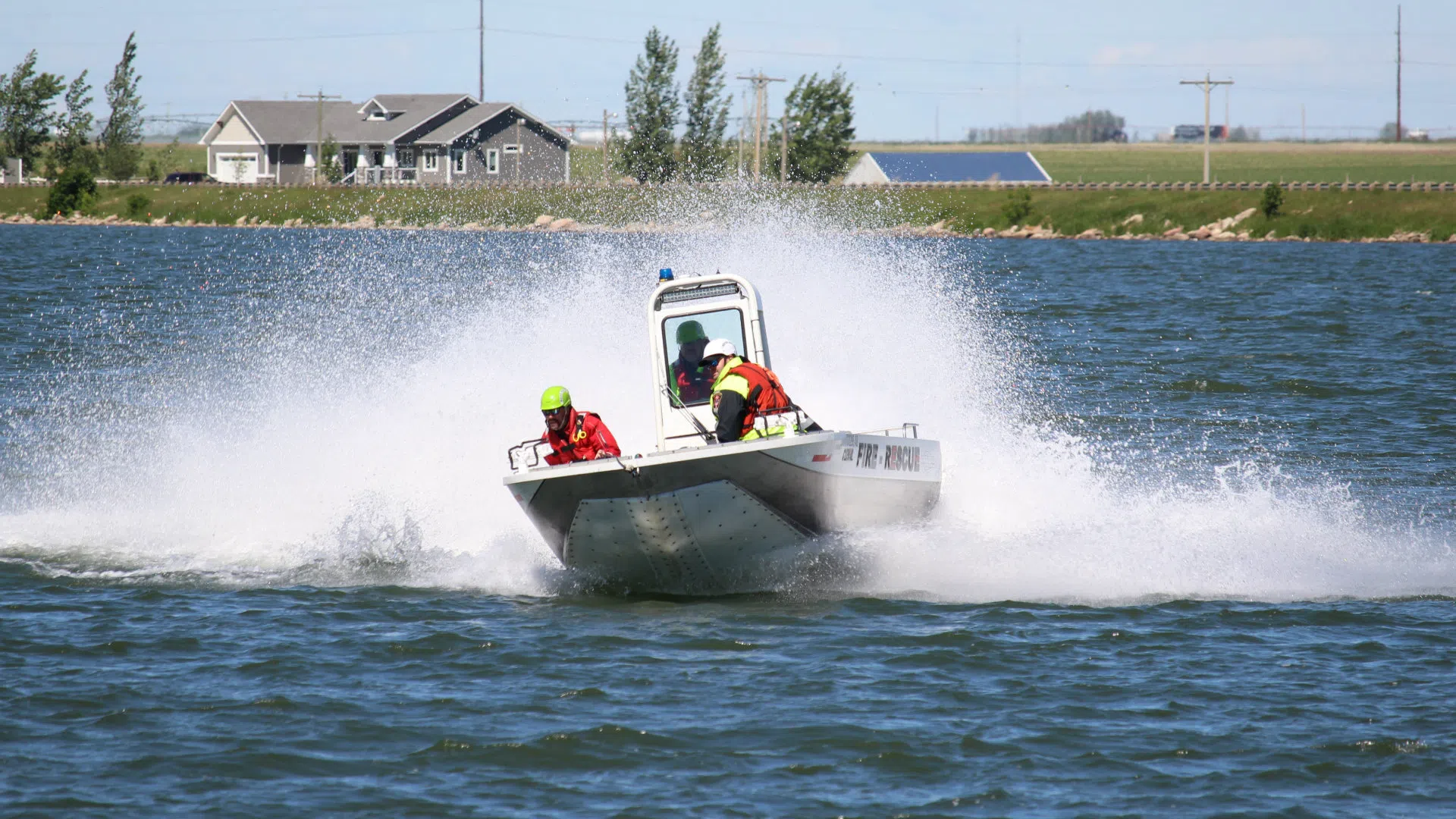
Lethbridge firefighters hit the waves for watercraft training
LETHBRIDGE – As southern Alberta winds whipped up choppy waves on Stafford Lake east of Coaldale Tuesday, June 12, 20 firefighter/paramedics with Lethbridge Fire and Emergency Services spent the day on the water sharpening their skills.
They are contending with those rough waters for their watercraft training, which is part of a four-day course. The three vessels they train on are a weir-deck, zodiac, and river/jet boat.
“Our guys are taking the boats out and we’re running them through a course,” explained water rescue team leader Brendon Pyne. “It’s designed to just get them to know the capabilities of the boats at their peak speed, how they handle cornering and what not, just in case they need to be in that sort of a situation.”
While the gusty west-winds make for cold conditions for the firefighters who are constantly getting splashed, Pyne said it’s a good thing for them to have to deal with.


